Once you’ve decided your organization will benefit from eLearning, the temptation to simply get started can be very strong. Starting too early, however, is one of the leading causes of project “churn” (that is, lots of activity but little productivity), which in turn is a common cause of timing problems, budget overages, and strained vendor-client relationships. (Read about how to avoid all the major causes of project churn here.)
You see, most eLearning agencies are there to help you take your content and convert it into a meaningful learning experience. At the start, they’ll know very little about the topic being covered. They rely on you and your organization for guidance. If you and your stakeholders have not agreed on the knowledge and skills that are needed, your agency will get conflicting messages from subject matter experts and stakeholders or, in some cases, no real direction from anyone.
So, how can you know when you’re ready to start? You need to be able to answer these four questions:
1) “What specific outcome does your organization hope to achieve?”
For training to have an impact, it needs to create behaviors – day-to-day, real-world workplace behaviors -- that align with your organizational intent.
So, the question is, how do you expect your organization to benefit from this training? The answer should not express a benefit to your learners. It should express a benefit to the organization. For example, how might an organization benefit if its sales reps could consistently and effectively ask probing questions during a sales call? The answer might be, “customers will have a better understanding of how the organization’s solutions address their specific needs.”
Sometimes, defining your desired organizational outcomes is a one-person job that takes five minutes. In other cases, it could involve a sophisticated strategic planning process. Either way, it’s critical to answer the question as specifically as you can before moving on.
2) “What workplace behaviors will be needed to achieve that outcome?”
What do your people need to be able to do in order for the organization to see the benefits it desires? This question requires imagining what a master performance would look like.
For example, let’s say an organization needs to avoid promoting its products for uses that are not approved by regulatory authorities (e.g., “off-label”). That’s the organizational intent. The next logical question might be, “What do our field staff need to do to avoid promoting our products ‘off label’?” One answer might be, “Well, they just need to never mention an off-label use of the product.” If the answer were really this simple, however, one could argue that training isn’t needed.
If the organization feels it needs training, more than likely, there’s a lot more to it. If so, the organization needs to agree on how its staff should and should not respond to the variety of off-label situations they encounter. An eLearning agency cannot answer this question for the organization, because it’s a matter of the accepted business practices of the client organization.
Don’t forget, all internal stakeholders involved with the project should be able to agree on this. Otherwise, your vendor will become, by default, the one who has to gain alignment among them. And you can be sure they did not budget for that.
3. “Where are the biggest performance gaps?”
Just because you know what master performance you’re looking for doesn’t mean you should train everyone on it. Somehow, you need to find out which of those areas people are weakest in. In other words, of all the behaviors your learner audience must be able to exhibit, determine which ones are most essential to train them on right now and which are not.
For example, let’s go back to those sales representatives who need to avoid promoting products off-label.
Let’s say you have identified two behaviors essential to that objective – addressing questions from customers related to off-label use and distributing research around off-label use. Of the two, the skill that representatives aren’t performing well is addressing questions related to off-label use. So that’s where the training should focus.
An internal stakeholder might say, “Oh, while we’re at it, we should also make sure our reps can communicate well with pre-sales engineers.” But that would be a mistake. That skill has nothing to do with responding to customers, and besides, reps already communicate well with pre-sales engineers – at least in this case. So investing time and resources in that training is only going to make a miniscule impact. Changing how they address customers’ questions, however, is going to have a big and noticeable effect on the outcome.
4. “What skills or knowledge must a person have in order to become a master performer?”
The goal is to translate the performance gaps into specific desired behaviors. If you’ve done the work involved with the previous steps, this is probably the easiest step of all.
Simply make sure each of the performance gaps is expressed in terms of a behavior. The output of this step is a list of ideal, observable, measurable behaviors that learners should be able to demonstrate by the end of training.
For the sales representatives in the previous example, the performance gap might be described this way: “When customers ask if sales representatives can provide an academic research article that covers off-label product use, many of the representatives think it is OK to give customers the article, because it’s not promotional and was authored by someone in academia.”
Now, turn that performance gap into the behavior you want your learner audience to master: “When customers ask if representatives can provide a specific academic research article that covers off-label product use, representatives will explain the company’s off-label promotion policy and direct the customer to another, third-party organization that might be able to help.”
Want to know more?
Having created hundreds of hours’ worth of eLearning for our clients, we can say this with confidence: Knowing the answers to these four questions can ensure a smooth and steady start to even the most complex eLearning projects.
To learn about other hidden bumps that can derail an eLearning project and how to avoid them, download our white paper, “The Training Executive’s eLearning Playbook: Avoiding the Seven Mistakes That Lead to Project Failure.”

.jpg)
